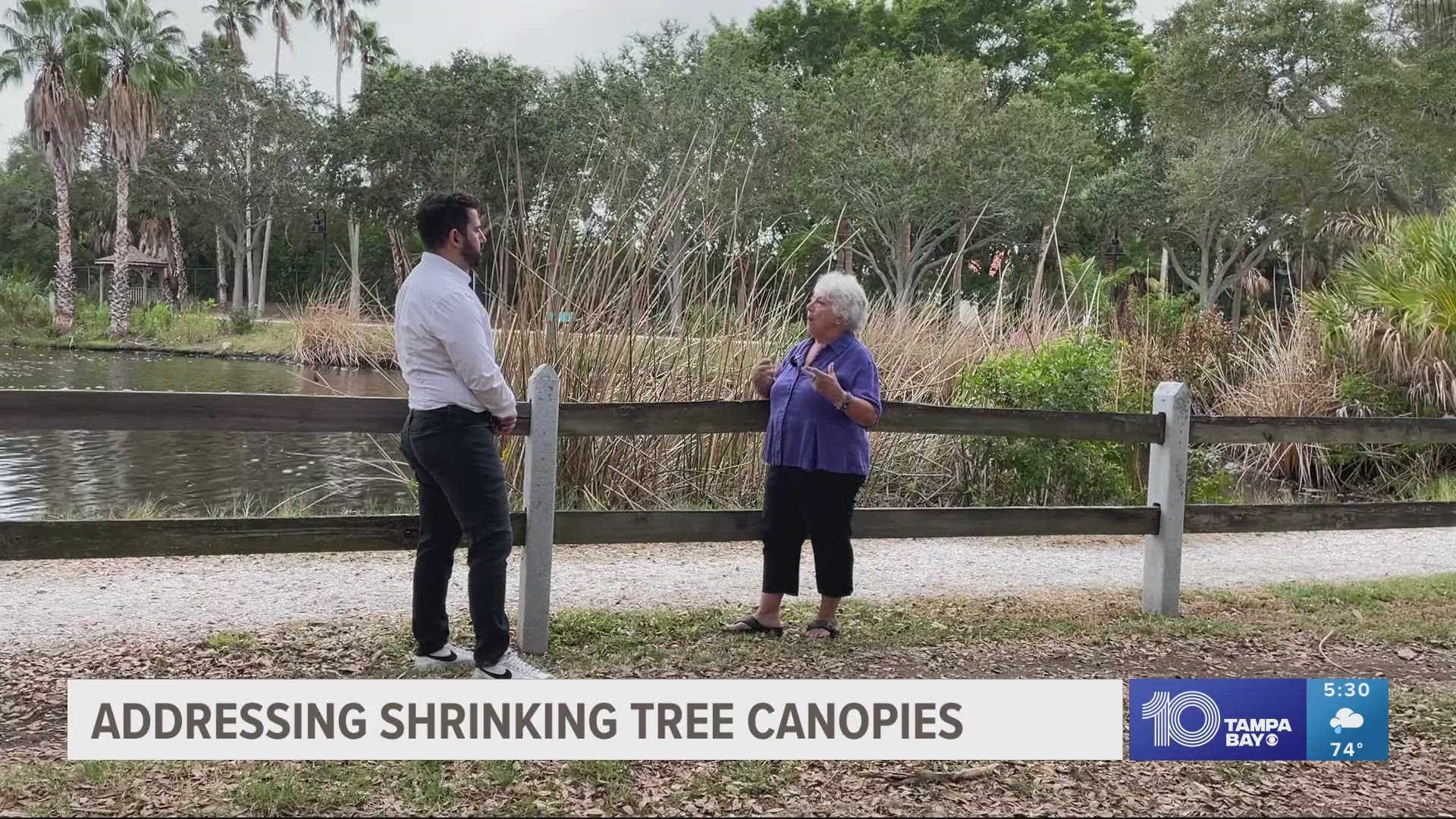GULFPORT, Fla. — Every morning, April Thanos takes her dog, Flora, for a walk around the park.
The city councilmember is proud to call Gulfport home. Thanos says aside from the art, culture and friendly people, there’s one thing in particular she fell in love with when she moved to the Pinellas County coastal city more than a decade ago.
“Nothing looks better to me than a tree-covered street, you know, you're driving down and it's beautiful,” Thanos said.
Though as many Tampa Bay areas like Gulfport grow, oftentimes the trees do the opposite. Right now, there are concerted efforts to reverse the troubling trend of less tree coverage.
“A lot of those are coming to the end of their lives and needing to be taken down,” said Thanos, pointing to some older Laurel Oak trees. “Also, [some are being taken down] because of more development."
Right now, Gulfport has 23% tree canopy, matching the percentage of the city that is covered by shady trees. Thanos is holding a community town hall at 6 p.m. Wednesday, Nov. 15, at Scout Hall to look at ways to increase that number to 30%.
She believes the benefits will be immeasurable.
“If you have trees around your house that help keep your house cool, plus with flooding a huge problem here in Gulfport and many other places it helps with that, [it protects against] soil erosion and [provides] clean air and everything," Thanos said. "I mean, it's just beautiful."
Gulfport’s not alone. Many Tampa Bay communities are working to build back up their shrinking canopies.
Over the summer, Tampa noted their canopy was at a 26 year-low, they’re now in the process of planting 30,000 trees by 2030 and have free trees available for residents to plant.
“The best time to plant a tree was 20 years ago, the second best time is today,” said Allison Mihalich, director of sustainability and resiliency for the city of St. Petersburg.
St. Pete is planting at least 1,000 trees per year, targeting areas that have a lesser canopy coverage, like the Childs Park area where a brand-new America Elm was just planted. Years from now, it could grow to have a canopy width of 100 feet.
“We’re working with residents, volunteers and neighborhood associations to get more shady trees in the ground,” Mihalich added, encouraging residents to reach out to their neighborhood associations if they would like to see more trees in their area. "The city also has kits available for folks who want to take inventory of what’s already out there.
“It provides numerous community health benefits, placemaking, shade, reduced urban heat island effect, it lowers overall temperatures, it’s just beautiful."
And their neighbor city’s Urban Forestry Plan is one Thanos hopes to model, as Gulfport drafts ideas for a greener and shadier future.
“Hopefully it makes everybody happier,” she added.

